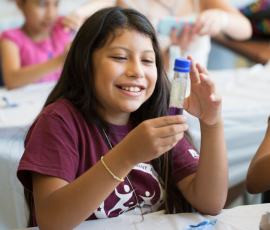
The COVID-19 pandemic introduced nearly all organizations to a remote working environment in some form or another. While most employees and organizations were able to maintain or even improve their productivity in a remote environment, there are questions regarding how to best navigate some aspects of company culture when employees cannot physically be in the same space. For example how to effectively onboard new team members and help integrate them into the existing office culture.
At the Murdock Trust, we were fortunate to welcome Amy Dickerson as our Program Coordinator for Enrichment Initiatives. Unfortunately, Amy’s first day just happened to fall on the day our team went fully remote as the pandemic took hold across our region. Having navigated the onboarding process while our offices were closed, Amy has a unique perspective on some of the key things to consider when onboarding a new staff member in a remote environment. While there is no one size fits all approach to onboarding new team members in a remote environment, Amy has shared some best practices that can be quite helpful.
Prioritize non-business communication – When working in an office, one of the most common ways to get to know your new colleagues is through those brief chats in the hallway or in the lunchroom. When we have those relationships established, it’s fairly easy to maintain contact via an instant message, a text, a ping on slack, or a brief hello at the start of a meeting. If those relationships have not yet been forged, it can be far more challenging. Prioritizing 15-20 minute “Zoom Coffees” with small groups of coworkers can help facilitate those early introductions and bonding opportunities. It can also be helpful to schedule these in a series over a few months to help reinforce bonding.
Be direct and overcommunicate – We may not realize it, but when we sit next to someone and watch them demonstrate a process, we likely achieve a better understanding of the work. It’s easier to ask clarifying questions and often the person is nearby if we have a brief follow up. Zoom demos are extremely helpful, but can lack some of that fine point support. When introducing a new team member to a process or platform, make sure to be very specific about the fine points of the work to be done and over communicate as many details as possible. Clarity is critical to helping establish best practices early and over the long term.
Remain diligent about the onboarding process – In a remote working environment, it can be easy for certain things to slip off the radar that otherwise would be top of mind if you are physically seeing staff in person. Make sure this does not happen to your onboarding process. Think through all of the onboarding steps you would use if your team were fully in the office and ensure those steps are replicated in remote form. It’s also ideal to go a bit above and beyond with these steps to ensure they have the same impact as if you were meeting in person.
A thoughtful hiring, onboarding, and development process is vital to ensure that your team and your organization flourish and thrive. What are some of your best bits of advice for the remote and hybrid work environment? We’d love to hear from you!








